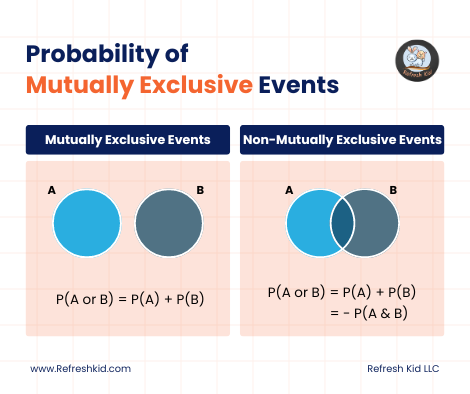Master the Art of Algebra: A Step-by-Step Guide to Solve Complex Equations
Introduction
Algebra is a fundamental branch of mathematics that deals with equations and their properties. It provides a powerful toolset for solving complex problems and understanding the relationships between variables. Whether you're a student, a professional, or simply an enthusiast, mastering the art of algebra can greatly enhance your problem-solving skills and open up a world of opportunities. In this comprehensive guide, we will take you through the step-by-step process of solving complex equations, equipping you with the knowledge and techniques to become an algebraic master.
Section 1: Understanding the Basics
To master the art of algebra, it's essential to have a solid foundation in the basic principles. In this section, we will cover key concepts such as variables, constants, coefficients, and terms. We will also explore the order of operations and the importance of parentheses in algebraic expressions.
Section 2: Simplifying Expressions
Simplifying expressions is a fundamental skill in algebra that involves combining like terms, applying the distributive property, and removing parentheses. By simplifying expressions, we can make them easier to work with and gain a deeper understanding of their structure. We will walk through various examples and techniques to simplify algebraic expressions effectively.
Section 3: Solving Linear Equations
Linear equations are equations of the form ax + b = 0, where a and b are constants and x is the variable. Solving linear equations is a crucial skill in algebra, as they form the building blocks for more complex equations. We will guide you through the step-by-step process of solving linear equations, highlighting key methods such as isolating the variable and applying inverse operations.
Section 4: Factoring and Quadratic Equations
Factoring is the process of breaking down a polynomial into its constituent factors. It plays a significant role in solving quadratic equations, which are equations of the form a+ bx + c = 0. We will explore different factoring techniques, including the difference of squares, perfect square trinomials, and general trinomials. By mastering these techniques, you will be able to solve quadratic equations efficiently.
Section 5: Working with Exponents and Radicals
Exponents and radicals are essential mathematical tools that allow us to express and manipulate numbers in various ways. In this section, we will delve into the laws of exponents, simplifying expressions with exponents, and rational exponents. Additionally, we will cover the basics of radicals, including simplifying radical expressions and solving equations involving radicals.
Section 6: Solving Systems of Equations
Systems of equations involve multiple equations with multiple variables. Solving systems of equations allows us to find simultaneous solutions that satisfy all the given equations. We will explore different methods for solving systems of equations, such as substitution, elimination, and matrix methods. Understanding these techniques will enable you to tackle real-world problems involving multiple variables.
Section 7: Inequalities and Absolute Value
Inequalities are expressions that compare the relative sizes of two quantities. They are often used to represent constraints and boundaries in various contexts. We will cover different types of inequalities, including linear inequalities, quadratic inequalities, and systems of inequalities. Additionally, we will explore the concept of absolute value and its applications in solving equations and inequalities.
Section 8: Polynomials and Polynomial Equations
Polynomials are expressions consisting of variables and coefficients, combined using addition, subtraction, and multiplication. They play a fundamental role in algebra and have a wide range of applications. We will discuss the properties of polynomials, polynomial long division, synthetic division, and the factor theorem. Furthermore, we will explore methods for solving polynomial equations, including the rational root theorem and the quadratic formula.
Section 9: Rational Expressions and Equations
Rational expressions are fractions with polynomials in the numerator and denominator. Understanding rational expressions is crucial for various algebraic concepts, such as solving equations involving fractions and simplifying complex fractions. We will cover topics like adding, subtracting, multiplying, and dividing rational expressions, as well as solving equations involving rational expressions.
Section 10: Logarithms and Exponential Equations
Logarithms and exponential equations are closely related and provide a powerful framework for solving equations involving exponential growth or decay. We will explore the properties of logarithms, including the laws of logarithms and the change of base formula. Additionally, we will discuss techniques for solving exponential equations and applying logarithms to real-world scenarios.
Section 11: Sequences and Series
Sequences and series are fundamental mathematical concepts that involve the ordered arrangement of numbers. We will explore arithmetic sequences and series, geometric sequences and series, as well as the formulas for their respective sums. Understanding these concepts will enable you to analyze and predict patterns in various mathematical and real-world scenarios.
Section 12: Matrices and Determinants
Matrices are rectangular arrays of numbers that have a wide range of applications in mathematics, science, and engineering. In this section, we will cover matrix operations, such as addition, subtraction, and multiplication. We will also discuss determinants and their role in solving systems of linear equations. Understanding matrices and determinants will provide you with a valuable toolset for solving complex algebraic problems.
Section 13: Complex Numbers
Complex numbers extend the concept of real numbers by introducing the imaginary unit, denoted as "i." They have both a real part and an imaginary part and find applications in various fields, including engineering and physics. We will explore the properties of complex numbers, perform operations with complex numbers, and solve equations involving complex numbers.
Section 14: Advanced Algebraic Concepts
In this section, we will delve into advanced algebraic concepts that go beyond the basics. We will discuss topics such as polynomial division, the remainder theorem, the fundamental theorem of algebra, and partial fractions. These concepts provide a deeper understanding of algebra and pave the way for more advanced mathematical studies.
Section 15: Applications of Algebra
Algebra has a wide range of applications in various fields, including science, engineering, finance, and computer science. In this section, we will explore real-world examples where algebraic techniques are utilized. We will discuss applications in physics, economics, cryptography, and optimization problems. Understanding how algebra is applied in different domains will enhance your problem-solving skills and highlight the relevance of algebra in everyday life.
Section FAQs
Q1: What is algebra?
Algebra is a branch of mathematics that deals with equations and their properties. It involves the manipulation of symbols and the study of relationships between variables.
A1: Algebra is a powerful tool for solving complex problems and understanding the patterns and structures that exist in mathematics and the real world.
Q2: Why is algebra important?
Algebra is important because it provides a foundation for higher-level mathematics and is widely used in various fields such as science, engineering, finance, and computer science.
A2: Mastering algebra allows you to develop critical thinking and problem-solving skills, enabling you to tackle a wide range of mathematical and real-world problems.
Q3: How can I improve my algebra skills?
Improving your algebra skills requires practice, patience, and a solid understanding of the fundamental concepts. Start by mastering the basics and gradually work your way up to more advanced topics.
A3: Practice solving a variety of problems, seek additional resources such as textbooks or online tutorials, and consider working with a tutor or joining a study group for additional support.
Q4: Are there any tips for solving complex equations?
When faced with complex equations, break them down into smaller, manageable steps. Identify the key operations needed to solve the equation and apply them systematically. Don't be afraid to use substitution, factoring, or other techniques to simplify the equation before proceeding.
A4: Remember to check your solutions by substituting them back into the original equation to ensure they are valid.
Q5: Can algebra be applied in real-life situations?
Absolutely! Algebra has numerous applications in real-life situations. From calculating financial investments to analyzing data trends, algebraic techniques can help make informed decisions and solve practical problems.
A5: Whether you're designing a bridge, managing a budget, or predicting population growth, algebra provides a powerful framework for problem-solving in the real world.
Q6: What are some recommended resources for further learning?
There are many excellent resources available to further enhance your algebraic skills. Online platforms such as Khan Academy and Refresh Kid offer comprehensive algebra courses. Additionally, textbooks like "Algebra: Structure and Method" by Richard G. Brown and "Algebra: A Graduate Course" by I. Martin Isaacs provide in-depth coverage of the subject.
A6: Don't forget to explore mathematical communities, online forums, and educational websites for additional practice problems and discussions with fellow learners.
Conclusion
Mastering the art of algebra opens up a world of possibilities. It equips you with the tools to solve complex problems, think critically, and make informed decisions. By following this step-by-step guide, you will develop a solid foundation in algebra and gain the confidence to tackle even the most challenging equations. Remember, practice and persistence are key to mastering algebra, so embrace the journey and enjoy the process of becoming an algebraic master.








